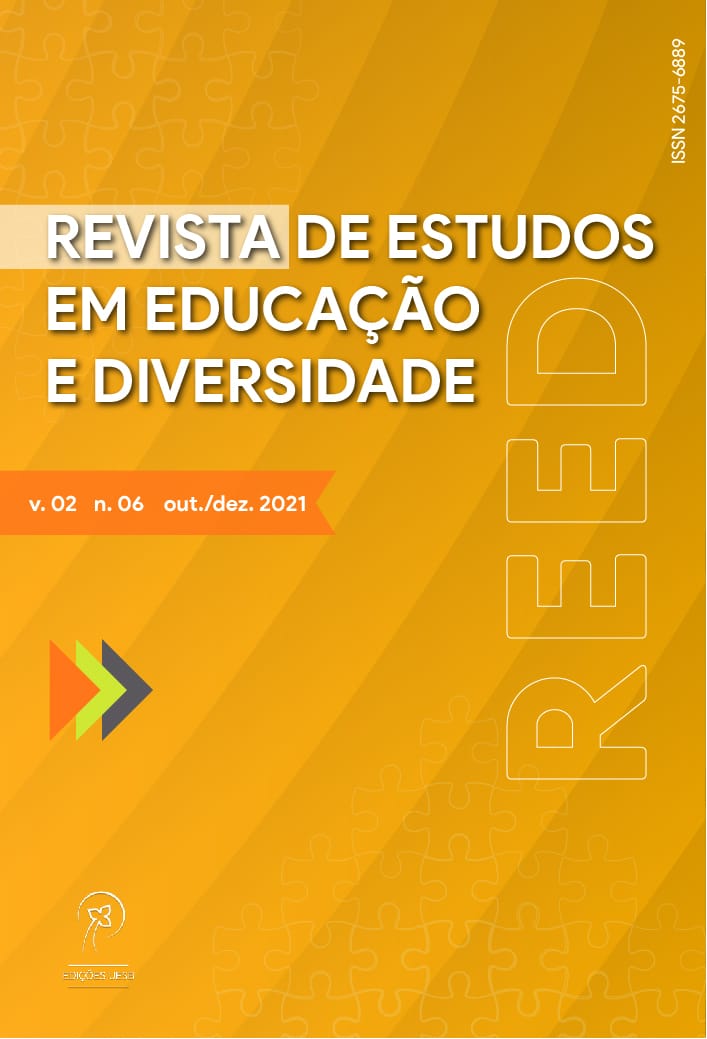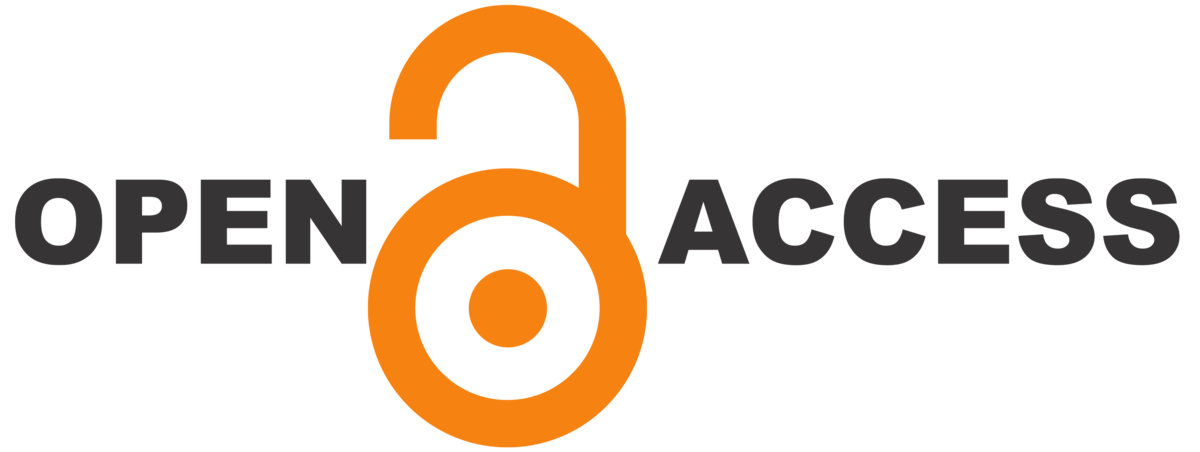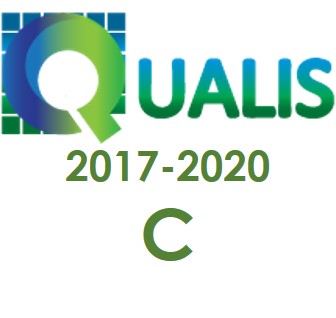REFLECTIONS BETWEEN CHILDREN'S DRAWING AND FREE PLAY IN EARLY CHILDHOOD EDUCATION
DOI:
https://doi.org/10.22481/reed.v2i6.9802Keywords:
Brincar livre, Desenho livre, Educação Infantil, CriançaAbstract
This work aims to reflect on the right and importance of games and free drawing in early childhood education. Playing and drawing are fundamental activities in this teaching stage, as the child will develop in an integral way, in its physical, social, cultural, affective and cognitive aspects. Thus, this study will provide a more conscious reading about the relevance of playing and drawing in human beings' lives, especially in children's lives. To this end, we resorted to the assumptions of bibliographical research and studies on the subject, dialoguing with some theorists, with guiding documents and with the knowledge acquired during our academic trajectory. A bibliographical review of the subject was carried out, which made it possible to support the study. It is a qualitative approach and consists of exploratory research. Through this work, we reach the conclusion that it is necessary for teachers to recognize the importance of playing and free drawing in the children's school environment, since playful activities contribute to child development and, therefore, it is up to educational institutions and teachers to emphasize this practice, with the intention focused on the learning process of students.
Downloads
References
ARIÈS, P. História social da infância e da família. Tradução: D. Flaksman. Rio de Janeiro: LCT, 1978.
BRASIL. Base Nacional Comum Curricular (BNCC). Educação é a Base. Brasília, MEC/CONSED/UNDIME, 2017. Disponível em: http://basenacionalcomum.mec.gov.br/images/BNCC_EI_EF_110518_versaofinal_site.pdf . Acesso em: 26 out. 2018.
BRASIL. Constituição da República Federativa do Brasil. Promulgada em 05 de outubro de 1988. Disponível em: http://www.planalto.gov.br/ccivil_03/constituicao/constituicaocompilado.htm. Acesso em: 18 nov. 2018.
BRASIL. Lei Federal n.º 8069, de 13 de julho de 1990. Estatuto da criança e do adolescente. Rio de Janeiro, 1990.
BRASIL. Lei n.º 9394/96. Lei de Diretrizes e Bases da Educação Nacional. Portal MEC. Disponível em: http://www.planalto.gov.br/Ccivil_03/leis/L9394.htm. Acesso em: 06 mai. 2018.
BRASIL. Ministério da Educação. Secretaria de Educação Básica. Diretrizes Curriculares Nacionais para a Educação Infantil. Brasília: MEC, SEB, 2010.
BRASIL. Referencial Curricular Nacional para a Educação Infantil. Ministério da Educação e do Desporto, Secretaria de Educação Fundamental. Brasília, MEC/SEF, 1998.
BUJES, Maria Isabel Edelweis. Escola infantil: pra que te quero. In: CRAIDY, Carmem Maria; KAERCHER, Gládis Elise P. da Silva (Orgs.). Educação infantil: pra que te quero? Porto Alegre: Artmed, 2001.
CARNEIRO, Maria ngela Barbato ; DODGE, Janine J. A descoberta do brincar. São Paulo: Editora Melhoramentos, 2007.
COX, Maureen. Desenho da criança. São Paulo: Martins Fontes, 2007.
DERDYK, Edith. Formas de pensar o desenho: Desenvolvimento do grafismo infantil. Porto Alegre: Zoukk Editora, 2015.
DIDONET, Vital. Educação Infantil. Humanidades, Brasília, n. 43, 1991, p. 89-98.
FERREIRA, Sueli. O Ensino das Artes-Construindo Caminhos. 1. ed. Campinas: Papirus Editora, 2001.
FERREIRA, Aurora. A criança e a arte: o dia a dia na sala de aula. 2. ed. Wak, 2007.
FREINET, C. O método natural I: aprendizagem da língua. Lisboa: Estampa, 1977.
KUNZ, Elenor. Brincar e Se-movimentar: Tempos e espaços de vida da criança.
Ijuí: Unijuí, 2015.
LOPES, Vanessa Gomes. Linguagem do corpo e movimento. Curitiba: Fael, 2006.
LOWENFELD, Viktor. A criança e sua arte. 2. ed. São Paulo: Mestre Jou, 1977.
MACHADO, Marina Marcondes. O brinquedo sucata e a criança. 4. ed. São Paulo: Edições Loyola, 1994.
MARCONI, Marina; LAKATOS, Eva. Fundamentos de Metodologia Científica. 5. ed. – São Paulo: Atlas, 2003.
MOREIRA, Ana Angélica Albano. O espaço do desenho: a educação do educador. Coleção Espaço. 8. ed. São Paulo: Edições Loyola, 2008.
MOYLES, Janet. Só Brincar? O papel do brincar na educação infantil. Porto Alegre, 2002.
OLIVEIRA, Elisangela Modesto Rodrigues; RUBIO, Juliana de Alcântara Silveira. “O Faz de Conta e o Desenvolvimento Infantil”. Revista Eletrônica Saberes da Educação, v. 4, n. 1, 2013.
PARENTES, Marlene de Souza. O brincar como ferramenta pedagógica na educação infantil. Primavera do Leste – MT, 2014. Disponível em: http://bdm.unb.br/bitstream/10483/9551/1/2014_MarleneDeSouzaParentes.pdf. Acesso em: 12 jun. 2018.
PIAGET, J.; INHELDER, B. A psicologia da criança. Tradução Octavio Mendes Cajado. 5. ed. Rio de Janeiro: Difel, 2011.
SANS, Paulo de Tarso Cheida. A criança e o artista. São Paulo: Papirus, 1994.
SANS, Paulo de Tarso Cheida. Pedagogia do Desenho Infantil. 4. ed. Campinas: Alínea, 2014.
VIGOTSKI, Lev Semenovich. A brincadeira e o seu papel no desenvolvimento psíquico da criança. Tradução: Zóia Prestes. Revista Virtual de Gestão de Iniciativas Sociais. Junho, 2008. p. 23-36.
VIGOTSKI, Lev Semenovich. A formação social da mente. São Paulo: Martins Fontes,1987.
Downloads
Published
How to Cite
Issue
Section
License
Copyright (c) 2021 Revista de Estudos em Educação e Diversidade - REED

This work is licensed under a Creative Commons Attribution 4.0 International License.
You are free to:
Share - copy and redistribute the material in any medium or format; Adapt - remix, transform, and build from the material for any purpose, even commercially. This license is acceptable for Free Cultural Works. The licensor cannot revoke these freedoms as long as you follow the terms of the license.
Under the following terms:
Attribution - You must appropriately give credit, provide a link to the license, and indicate if any changes have been made. You may do so in any reasonable way, but not in a way that suggests that you or your use is endorsed by the licensor.
There are no additional restrictions - You cannot apply legal terms or technological measures that legally restrict others to make any use permitted by the license.












